Traditionally, a distinction is only made between two Chalceus species, one with a shoulder spot (C. erythrurus) and one without (C. macrolepidotus). The species with the shoulder spot has yellow ventral fins when sexually mature, at least the females. This classification has often led to confusion in the trade, as there are clearly more color-distinguishable Chalceus types. In 2004, a scientific revision of the genus was carried out, which came to the conclusion that there are not just two, but five Chalceus species. The three newly described species are C. spilogyros, C. guaporensis and C. epakros; the validity of C. erythrurus and C. macrolepidotus remained unchanged. Unfortunately, the scientists had almost exclusively preserved material at their disposal. This makes identification according to color characteristics, which can only be carried out in the aquarium hobby, not easy, especially as the animals change their coloration in the course of their lives. Young animals are considerably less conspicuous than sexually mature specimens.
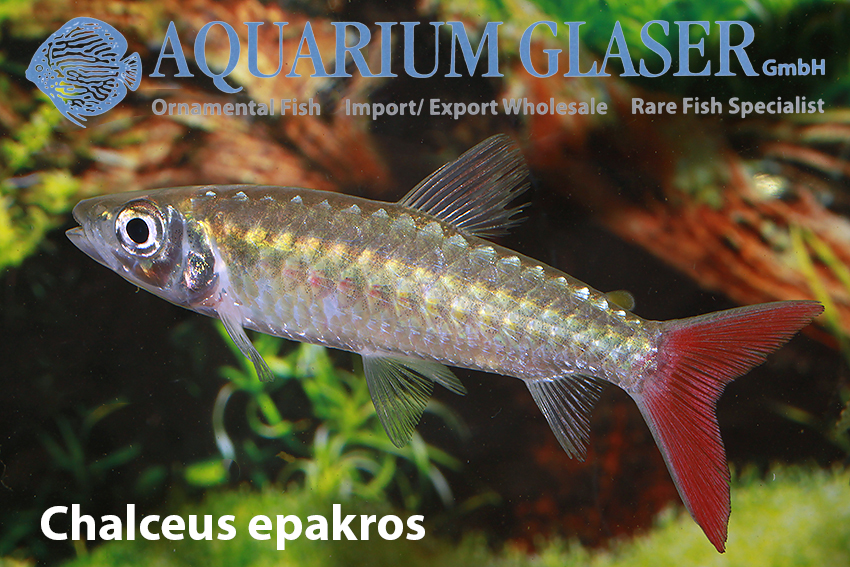
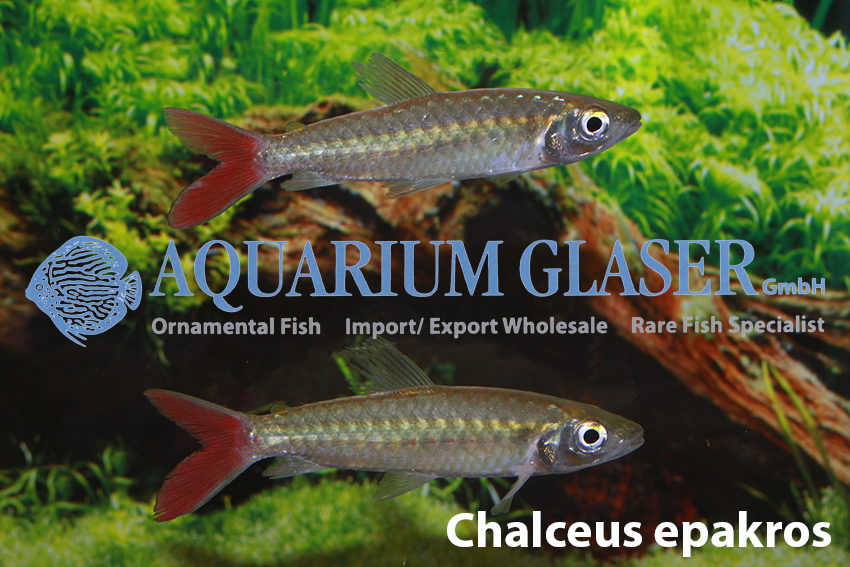
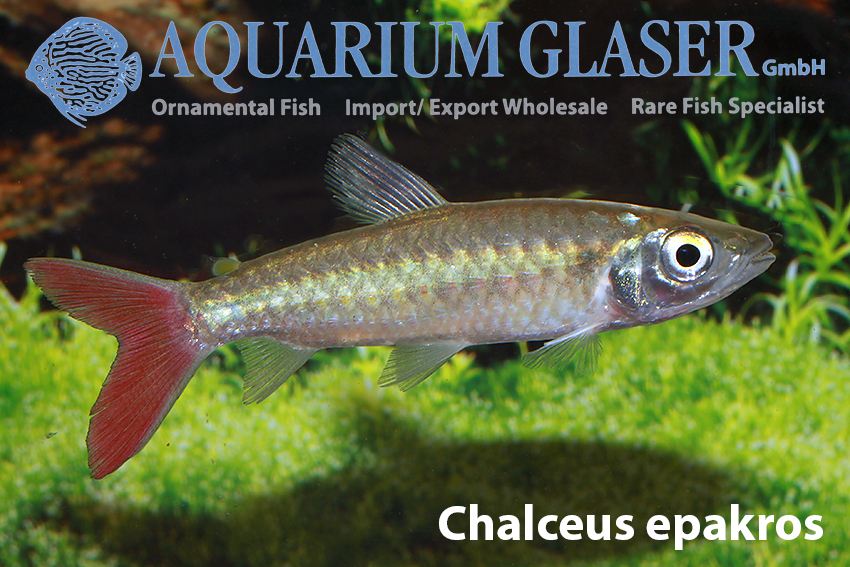
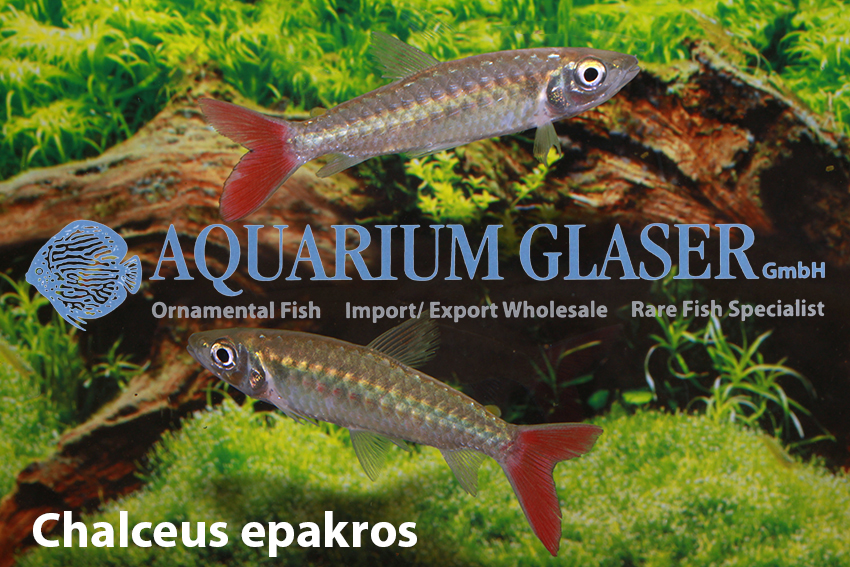
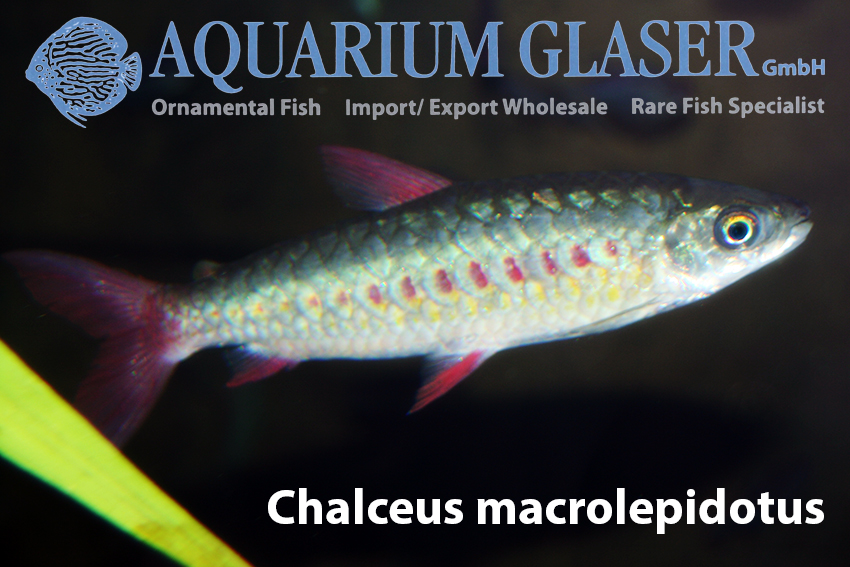
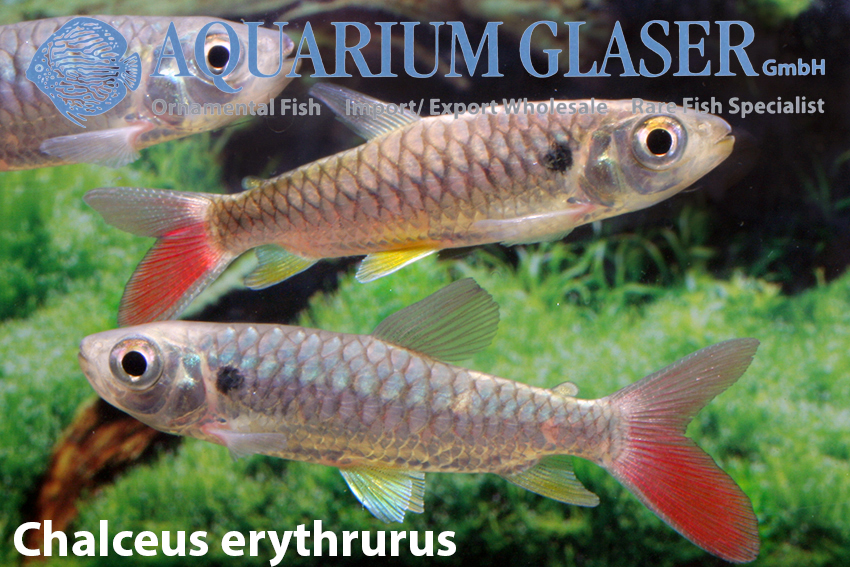
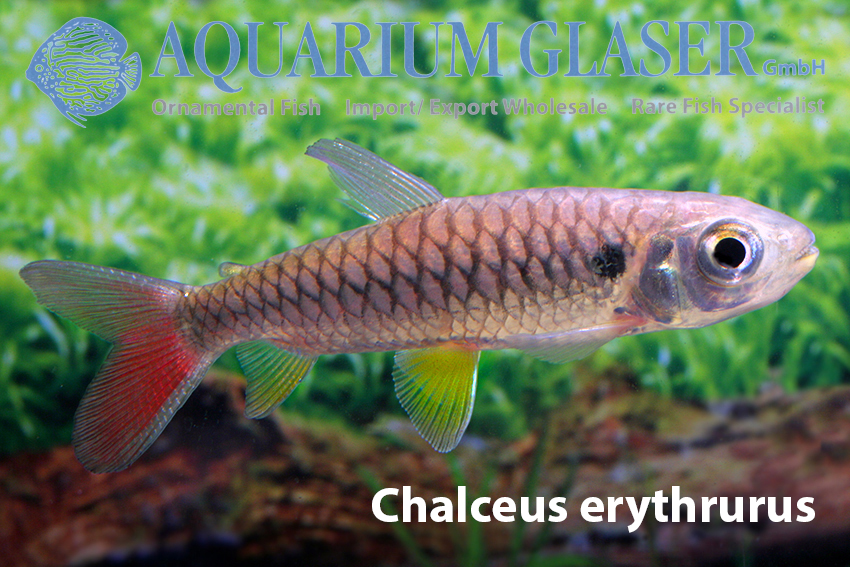
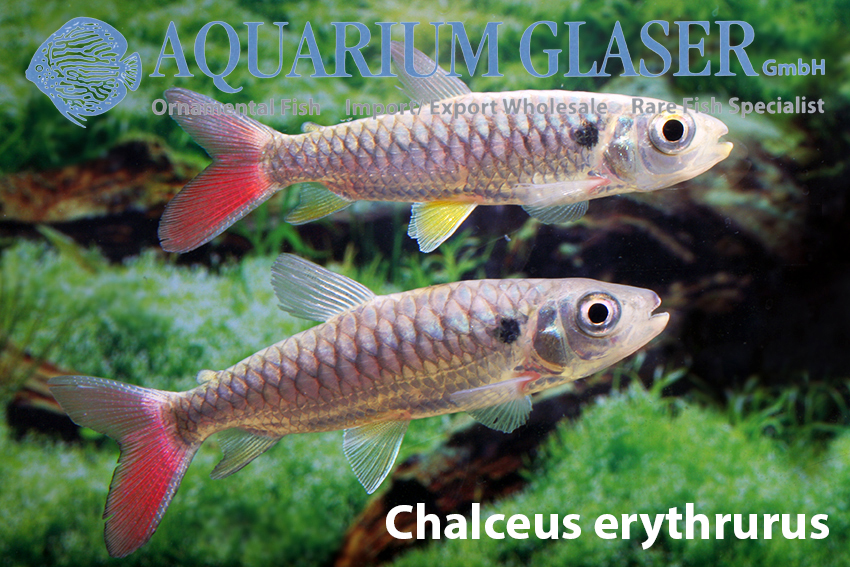
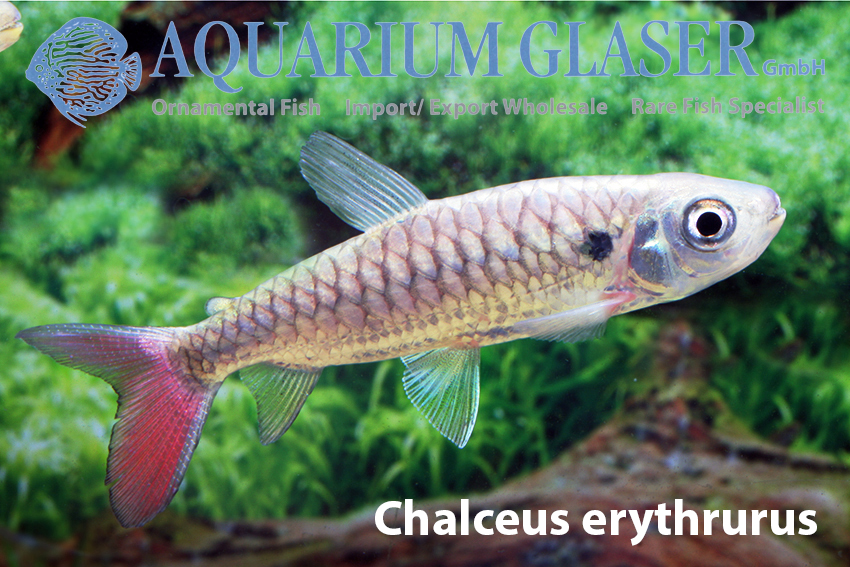
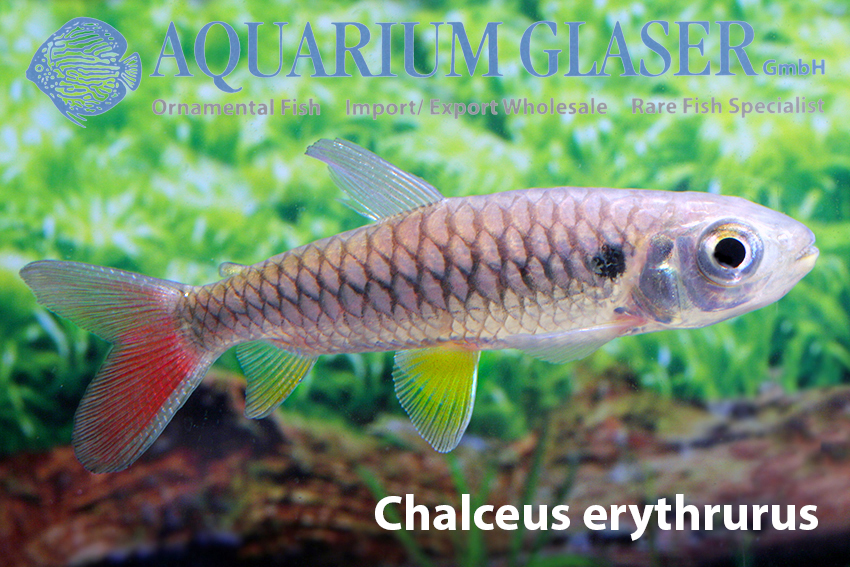
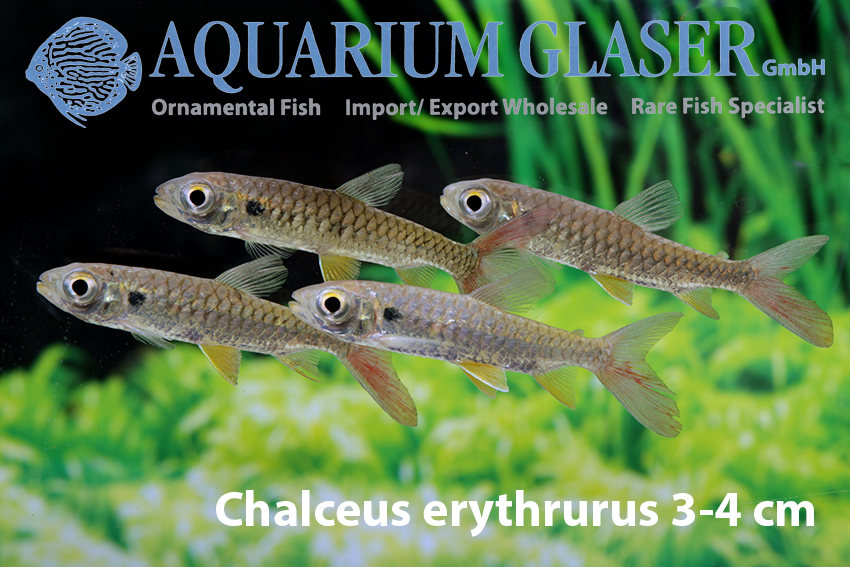
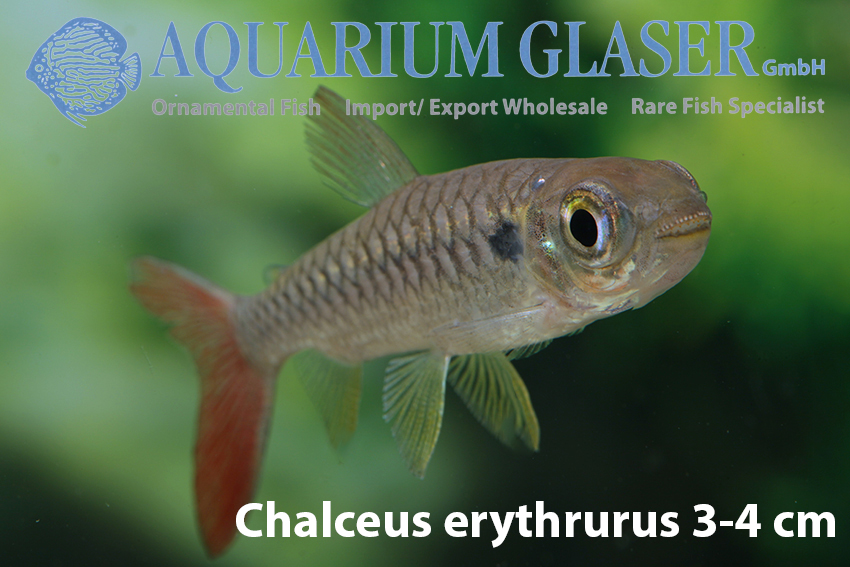
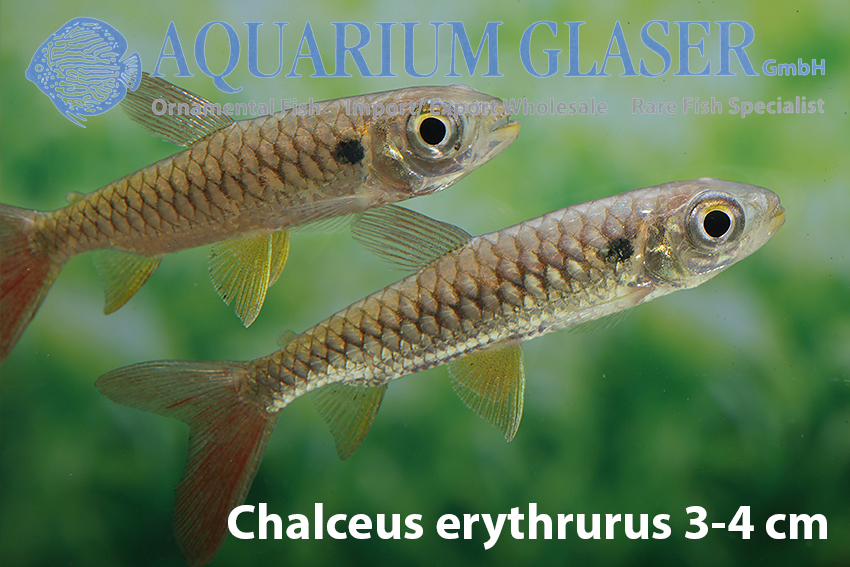
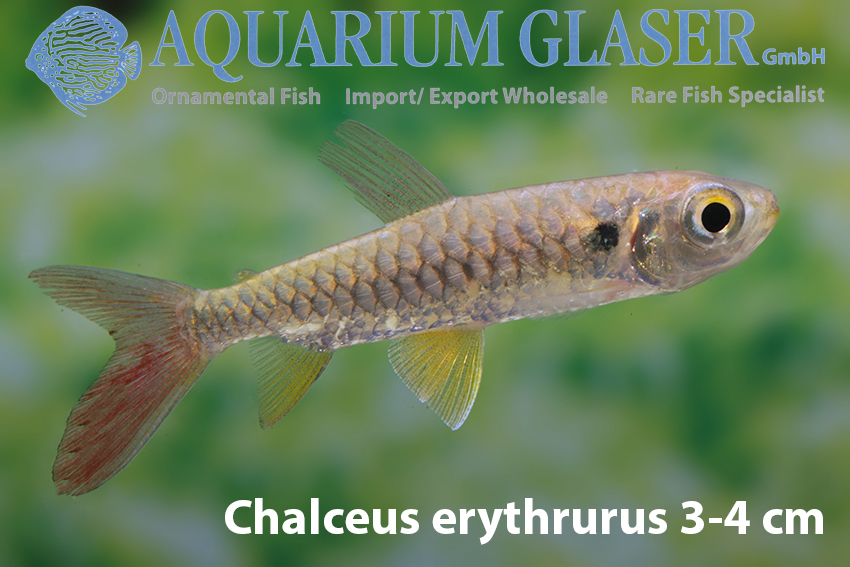
After all, they remained: Chalceus macrolepidotus is the only Chalceus species without any shoulder spot. The species is very widespread in South America and colonizes practically the entire tropical region east of the Andes. The largest known specimen was 25 cm long (all sizes given in this post exclude the caudal fin).
C. erythrurus and C. spilogyros have a large, round, conspicuous shoulder spot. The former species has colored ventral and anal fins (at least after reaching a certain size of 8-10 cm), bright yellow in the presumed females and blue-white in the presumed males. C. spilogyros has transparent fins. C. erythrurus remains somewhat smaller than C. macrolepidotus (21.5 cm) and is found in the upper Amazon region. The caudal fin lobes of this species are relatively short and rounded. C. spilogyros originates from the Rio Trombetas, the lower Rio Tapajós and the lower Rio Madeira. The largest animal was 22.5 cm long. The caudal fin lobes of this species are relatively long and appear almost pointed.
Chalceus guaporensis (14 cm, upper Rio Madeira, Rio Guaporé (Bolivia) and Rio Madre de Dios (Peru)) and C. epakros (17.5 cm, Amazon basin, Orinoco drainage and Essequibo basin in Guyana) only have a blurred, indistinct shoulder spot and an equally indistinct longitudinal band from the gill cover to the base of the tail. The color cells (chromatophores) responsible for the shoulder spot and longitudinal band are located deep in the skin of these two species; in C. erythrurus and C. spilogyros, the chromatophores responsible for the shoulder spot are located very superficially. In preserved animals of C. guaporensis and C. epakros, the shoulder spot and longitudinal band are therefore much more clearly recognizable than in living animals.
C. erythrurus is currently almost exclusively represented in the hobby, as this species is bred in Indonesia and Thailand and is therefore always available at a reasonable price. All other species appear – if at all – only sporadically in the trade. Theoretically, C. macrolepidotus could be imported at any time, but it hardly ever appears on the market. The fact that the other species exist at all has hardly got around in aquarium circles. We have occasionally imported C. epakros (then still identified as C. macrolepidotus) from Colombia. These are very beautiful fish. Only a few high-priced ornamental fish are offered from the distribution areas of C. spilogyros and C. guaporensis, so the two Chalceus species, which are only of interest to specialists, are more likely to end up in the cooking pot than on the export lists, as the representatives of the genus Chalceus can be compared quite well with our native trout. Similar to these, Chalceus prefer to live on approach food, i.e. insects etc. that fall to the surface of the water. And the 20-25 cm long animals have – if you believe the information in the literature, we don’t tend to eat our animals – the most delicious meat of all, even tastier than that of trout.
From an aquaristic point of view, these magnificent creatures need large aquariums in which they can grow. The fish like to be in relatively strong currents, preferably in places that are somewhat shaded from above. You should always keep 10 or more specimens, otherwise they can become quite quarrelsome with each other.
Chalceus are peaceful towards other fish and do not care for plants. You should bear in mind that Chalceus are excellent jumpers; the aquarium must therefore always be perfectly covered.
For our customers: Chalceus erythrurus (offspring) has code 215003 on our stocklist. Please note that we only supply the wholesale trade.
Text & photos: Frank Schäfer




